You must be logged in to view this content. Click Here to become a member of IndyWX.com for full access. Already a member of IndyWx.com All-Access? Log-in here.
Category: Harvest ’20
Permanent link to this article: https://indywx.com/2020/09/04/afternoon-video-update-tracking-a-significant-early-fall-storm-system-next-week/
Sep 03
Long Range Update: Making Sense Of The “Noise” Into Mid-Late September…
Over the past couple of days we’ve noted a tremendous amount of chaos within the medium range forecast models for next week. At times, the American data was suggesting October-like chill while the European data painted a picture that would make mid-summer proud. The end result will likely end up being a blend of the two extreme solutions (cooler, most certainly, but not to the extent once forecast off the GFS- and a far cry from the extreme heat shown from the European). We’ll handle that with our short to medium term updates from here on out.
As we look ahead to mid and late September, the baseline of our forecast remains unchanged and that’s the idea that the MJO will move into Phases 5 and 6. At first, this is a cool phase for the time of year, but once to around the 18th-20th, we flip the script to a drastically warmer period, compared to average. Note the (2) MJO analogs below:

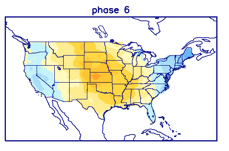
This is very similar to what the latest CFSv2 and European Weeklies show:


After what will likely be a much more active and wetter week ahead, the following couple of weeks take on a dry look from the models:


Interestingly, Phase 5 of the MJO is also a dry phase this time of year, locally:

Much more throughout the weekend!
Permanent link to this article: https://indywx.com/2020/09/03/long-range-update-making-sense-of-the-noise-into-mid-late-september/
Sep 03
VIDEO: Labor Day Weekend Opens On A Gorgeous Note; Next Week’s Trends Something To Get Used To For The Upcoming Winter?
You must be logged in to view this content. Click Here to become a member of IndyWX.com for full access. Already a member of IndyWx.com All-Access? Log-in here.
Permanent link to this article: https://indywx.com/2020/09/03/video-labor-day-weekend-opens-on-a-gorgeous-note-next-weeks-trends-something-to-get-used-to-for-the-upcoming-winter/
Aug 30
September 2020 (And Fall) Outlook…
Well here we are on the eve of meteorological fall and, right on cue, there’s a change on the horizon in the overall weather pattern. Does the quick start to a more autumn-like feel early and mid September continue into late month, or for that matter October and November? Let’s look at September first:
I. MJO will remain active- moving out of Phase 2 and into 3, 4, 5, and 6.
II. Tropics should remain busy with more of an East Coast threat.
III. West looks to remain hot and dry.

Note the precipitation and temperature patterns associated with the MJO phases this time of year:
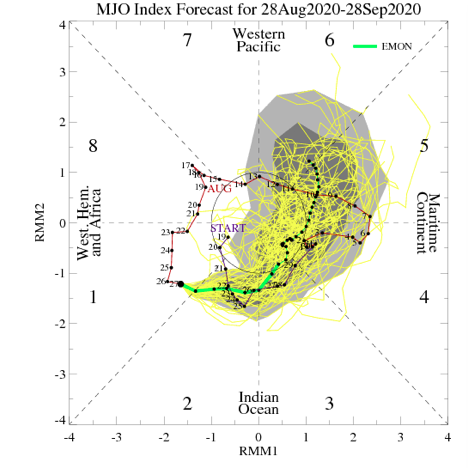


The next couple of weeks will feature multiple cold fronts sliding through the region and each will provide progressively cooler air. The front coming through around Labor Day may even result in the hoodies having to be pulled out for the first time, including an early October-like feel. BUT- note how the MJO wants to rumble into Phases 5-6 towards late month. These will likely lead to a warmer pattern around Sept. 20th (give or take a day or two) through the remainder of the month.
As we broaden the spectrum a bit and focus on September through November, let’s start by taking a look at how the oceans may impact the pattern:

Most models suggest La Nina will peak late fall or early winter before giving way to La Nada by spring.

Aside from the upwelling associated with Laura, most of the Gulf of Mexico and certainly off the East Coast remains much warmer than normal. Unfortunately, this, along with other favorable conditions in the main development region (MDR) will likely continue to promote a hyperactive 2nd half of the tropical season. The other impact will likely be a warmer than normal fall season along the eastern seaboard, bleeding back into areas west of the Appalachians. Furthermore, we think the MJO will lean more towards Phases 6-8 for mid and late autumn.
The blend of the CFSv2 and European seasonal data sees a similar forecast to what we have out for September for the autumn, as a whole:

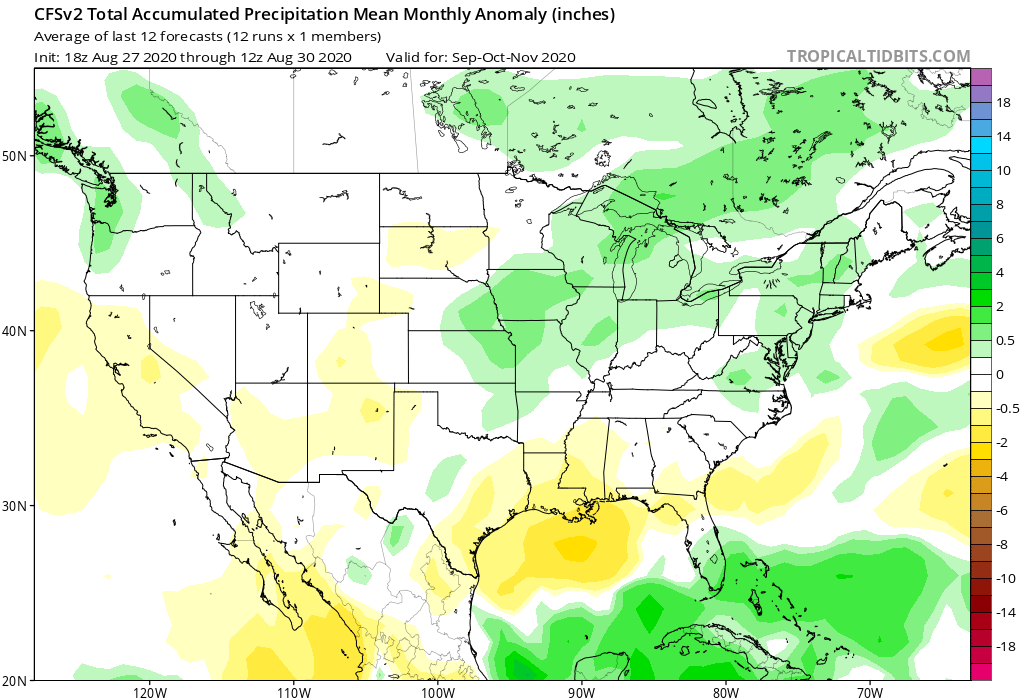

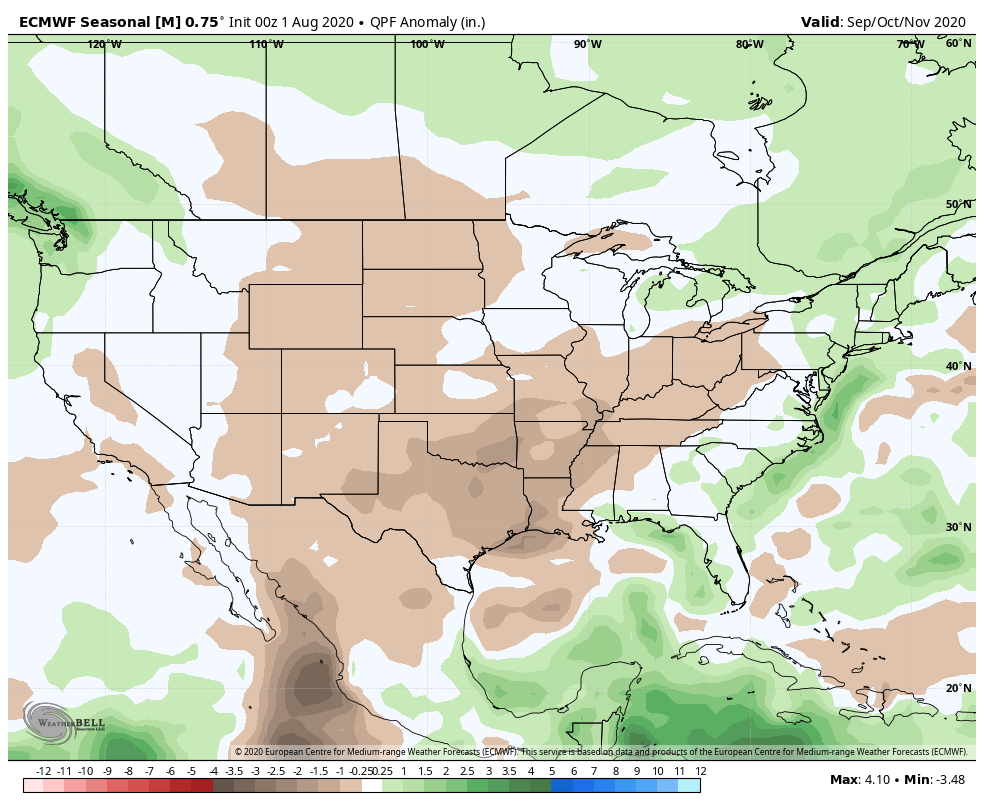
We believe fall 2020 will run slightly warmer than normal for our immediate region with the greatest spot for cooler anomalies to show up throughout the central Plains. After what we believe will be a wet September, things may take a turn for the drier in October before flipping back to wet in November. We prefer the way the CFSv2 handles the precipitation pattern compared to the European.
Next seasonal outlook we produce? Our annual winter package. Tick tock…
Permanent link to this article: https://indywx.com/2020/08/30/september-2020-and-fall-outlook/
Aug 13
Long Range Update: Closing Out August…
With a little over 2 weeks to go in meteorological summer, model data disagrees in the way the month- and season ends. That is, after the upcoming week where the consensus is cooler and drier than normal (we agree, as well). Let’s take a look at the data:
European Weeklies
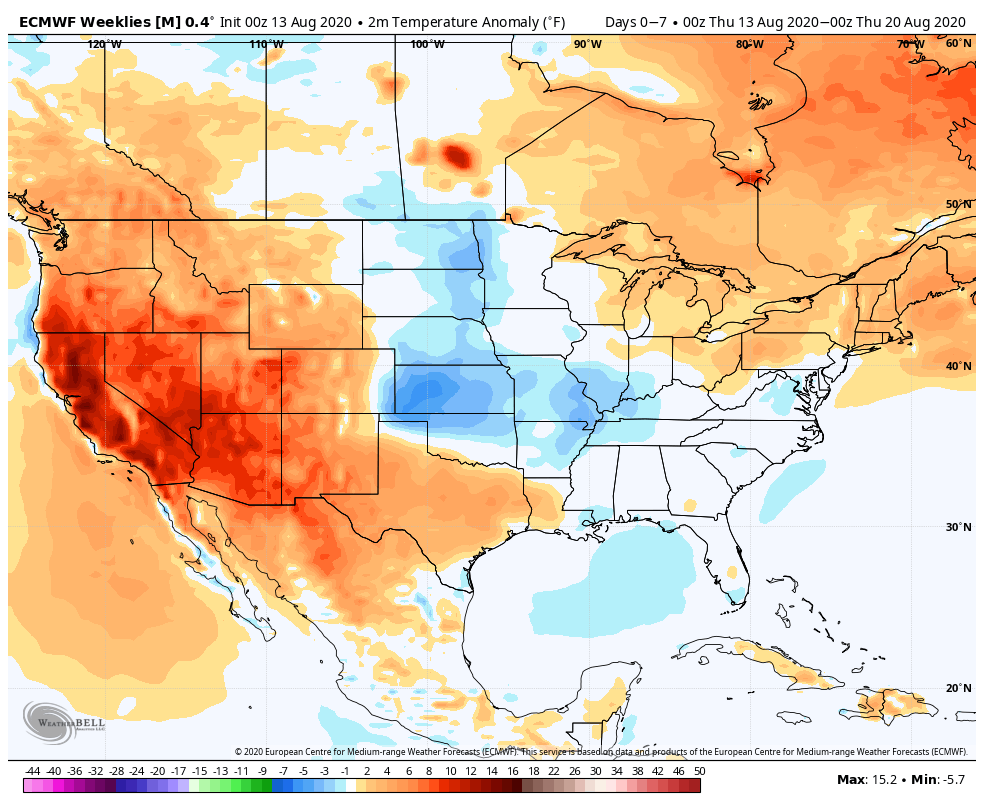
CFSv2

GEFS
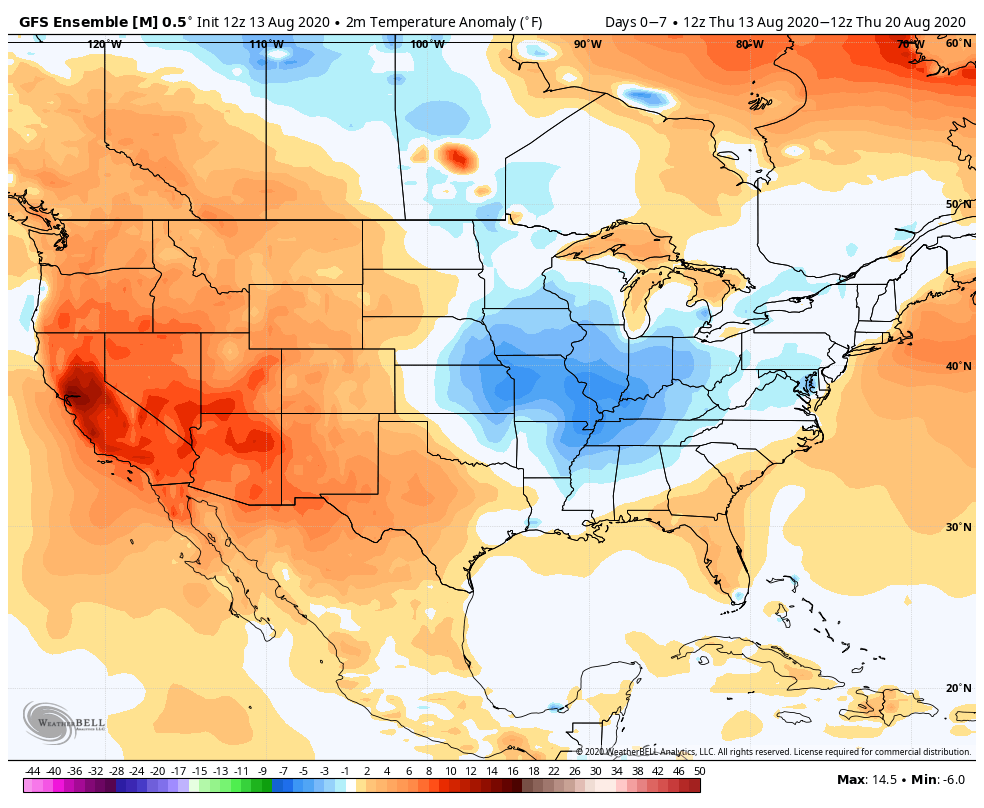
EPS

JMA
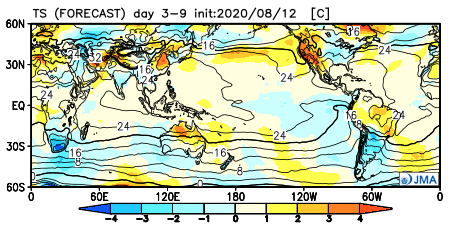
The American data and JMA Weeklies are coolest (compared to the European), but compared to Weeks 2 and 3, there’s better consensus. The initial week is also looking drier than normal- especially after a “smattering” of storms tomorrow and Saturday.
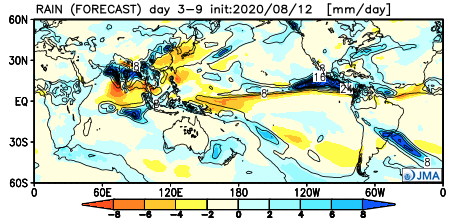

Let’s now take a look at Week 2:
European Weeklies
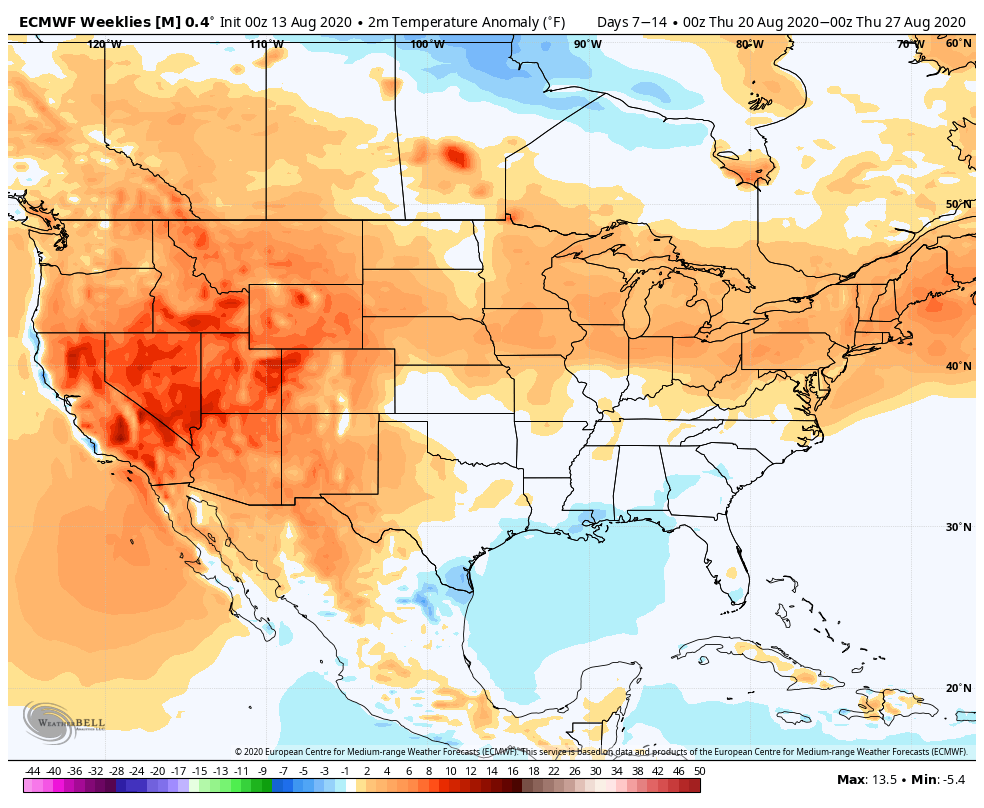
CFSv2
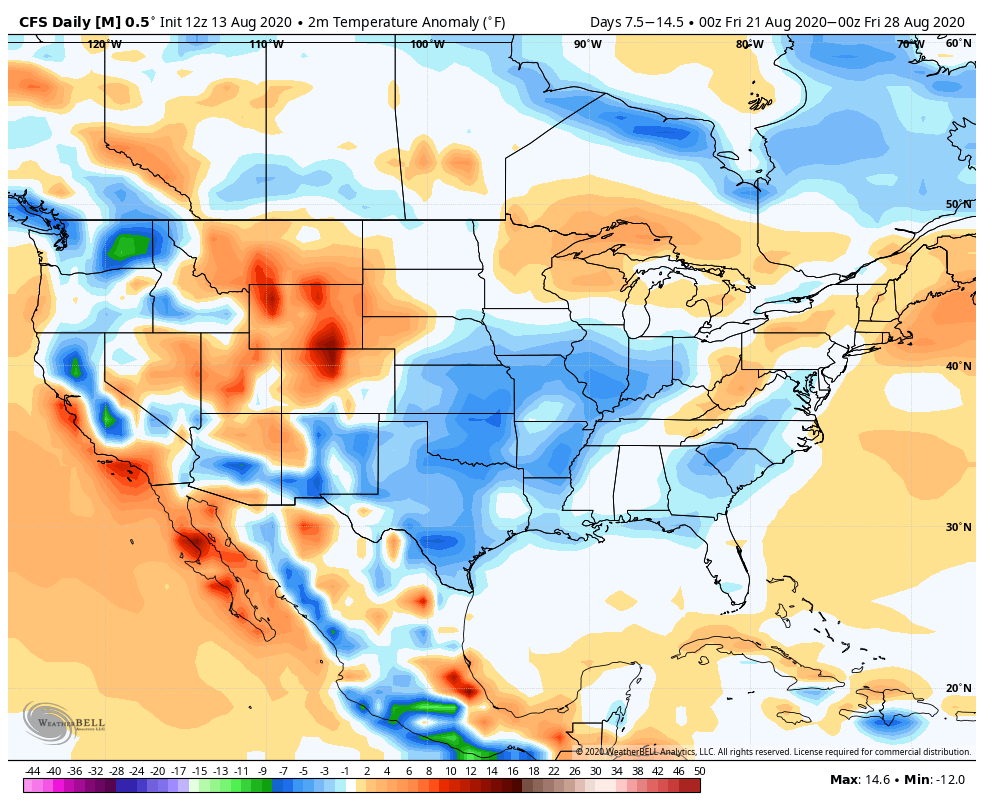
GEFS

EPS
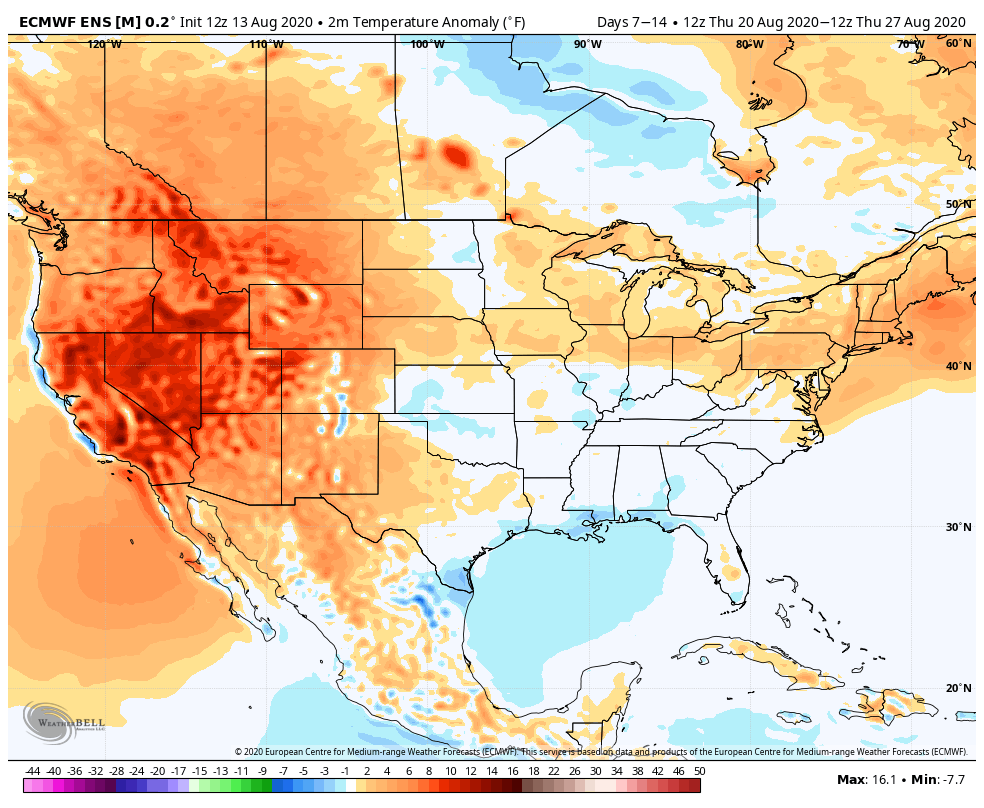
JMA
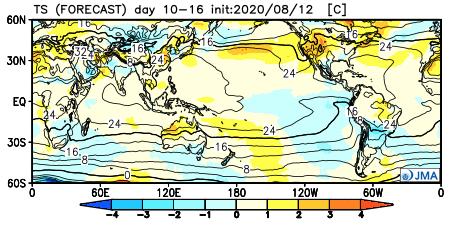
This is where our idea begins to pivot more towards the JMA Weeklies and European data (warmer look). The reason primarily has to do with the MJO moving back into Phase 8 during this time period.
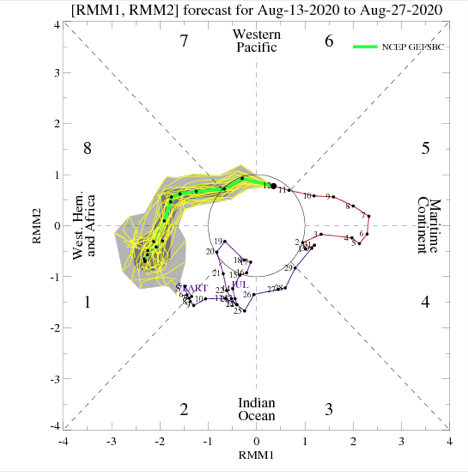
This is a warm phase in August.

Furthermore, the PNA ‘mean’ is forecast to trend off the positive “mountain” (that will help drive the cooler pattern for the upcoming week) and more towards neutral.
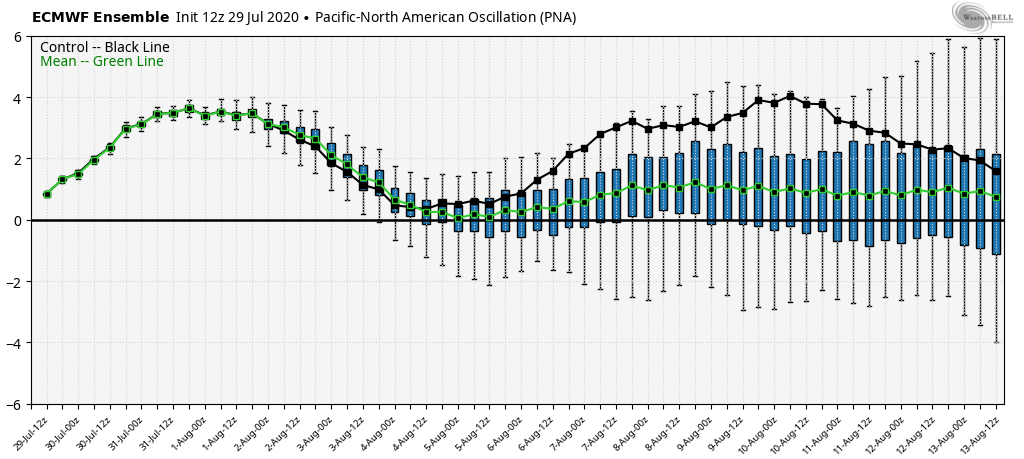
Phase 1 is also a warmer look for our part of the country and that’s the way we’re leaning for the last week of the month (despite the very cool CFSv2).
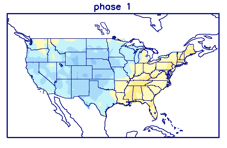
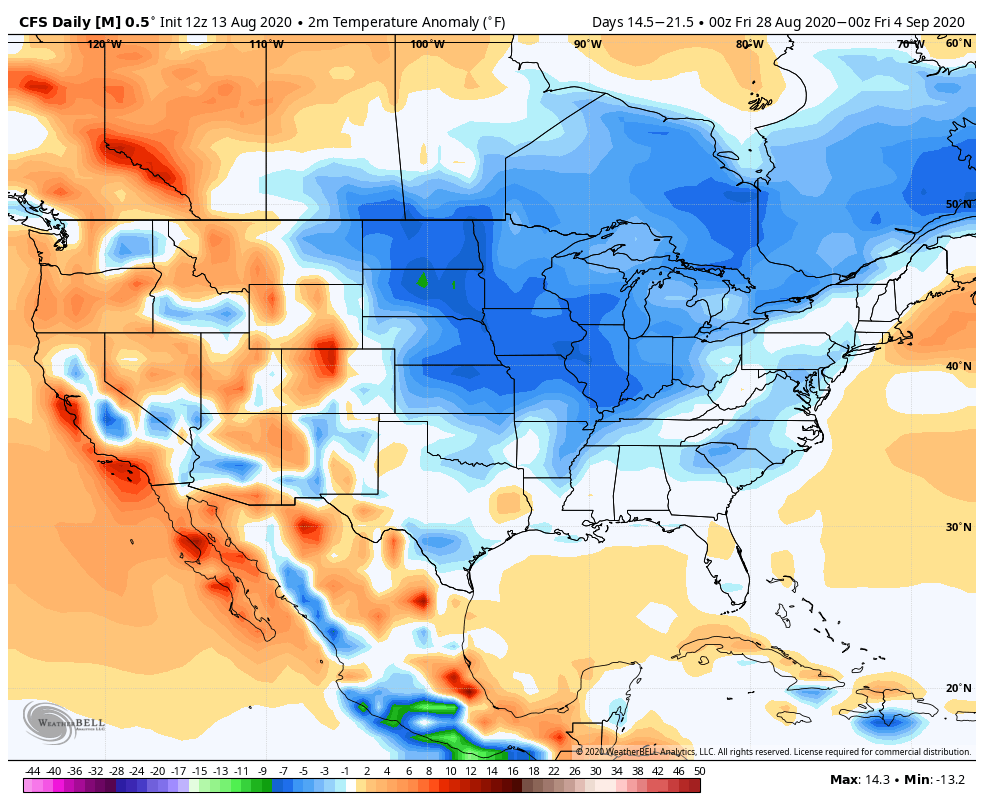
While not overly warm, we think the JMA has the best handle on the temperature pattern in the Week 3 timeframe, locally (seasonable to slightly above normal).
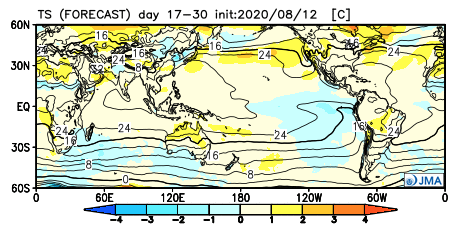
The pattern should also begin to trend wetter during this time period:
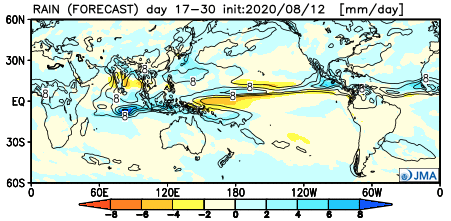
This matches up with Phase 1 of the Madden Julian oscillation:
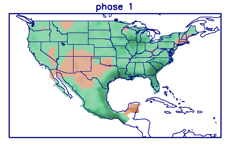
So, to summarize, after a cool and dry period next week, we anticipate the pattern to trend warmer (more seasonable) and wetter to close the month and head into early September. One other item of note is that the tropics should really begin to heat back up during this period, as well. Of course, as is the case from time to time, that can be a wild card from a precipitation perspective. The Gulf of Mexico (GOM) looks particularly busy late August through late September, but there’s simply no way to get more specific from this distance, including potential inland impacts. It’s worth keeping a close eye though.
Before we leave, the latest JAMSTEC seasonal data updated this morning and features a “torch” of a fall, along with a warm, wet winter, locally. That southeast ridge will have to be dealt with this winter. While still early, the early lean is for a warm start to winter (including holiday season). While there are some ingredients that may keep things more interesting than what they could be otherwise, from at least this point, this doesn’t appear as if it’ll be an “exciting” winter for lovers of snow and cold. Much more later- and again, we still have a long way to go…
Permanent link to this article: https://indywx.com/2020/08/13/long-range-update-closing-out-august/
Aug 09
Thoughts Begin To Shift To Fall (And Winter)…
While we still have a few weeks left of meteorological summer, we’re hard at work finalizing our fall outlook and prep continues for winter. By the way, our fall outlook will be online Friday morning, the 28th.
From this distance, there’s obviously a risk involved with seasonal data that we’re reviewing and tweaks (particularly to the initial winter idea) will undoubtedly have to be made. In short, we anticipate a weak La Niña to dominate the fall and winter, with a robust MJO.
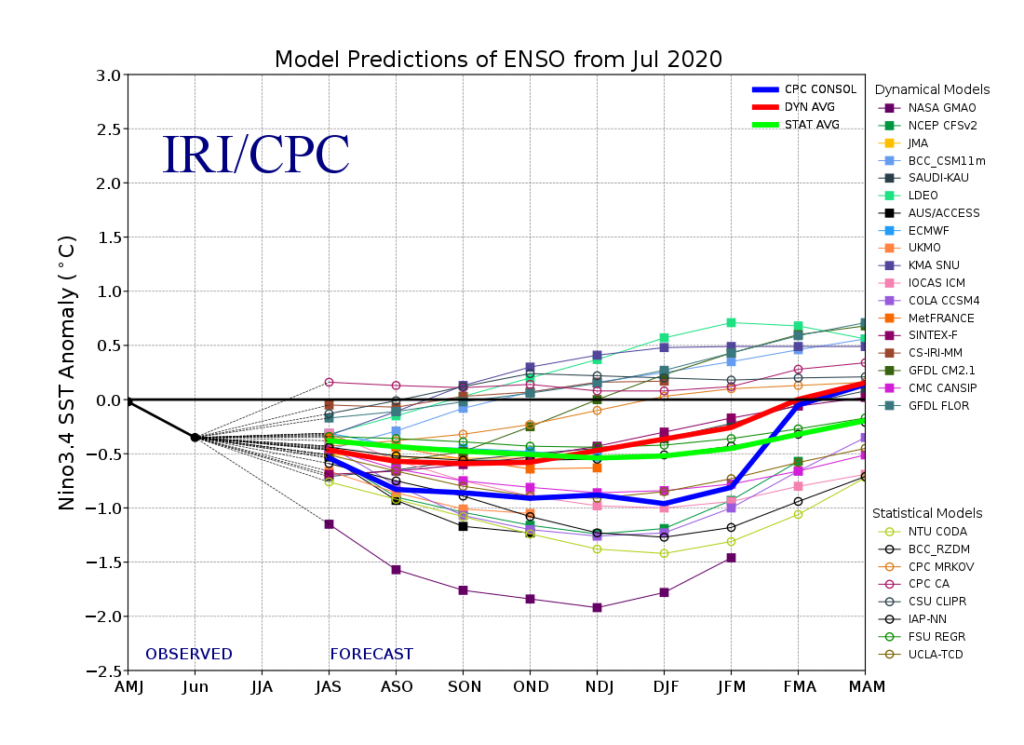
Of course, it’s important to remember, no La Niña is like the other and a simple “broad brush” approach never works.
Without question, the tropics will claim headlines through the fall. Unfortunately, like others, we anticipate a significant uptick in activity late August into October. A few major hurricanes are likely, as well. The Gulf of Mexico and Carolina coast appears particularly vulnerable…

Most computer model data is leaning towards a warm autumn. We’d agree, overall, but leaning wetter than the majority of data right now, due in large part to tropical impacts.
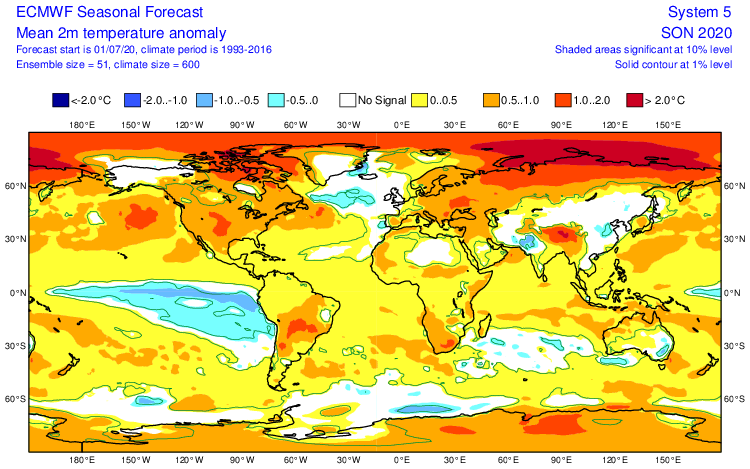
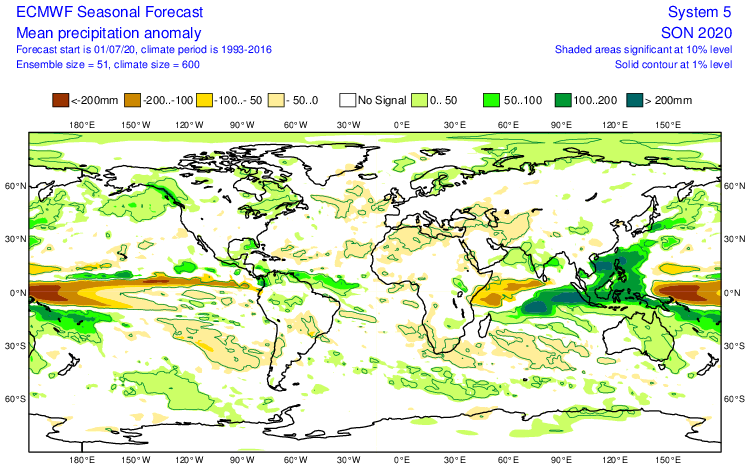
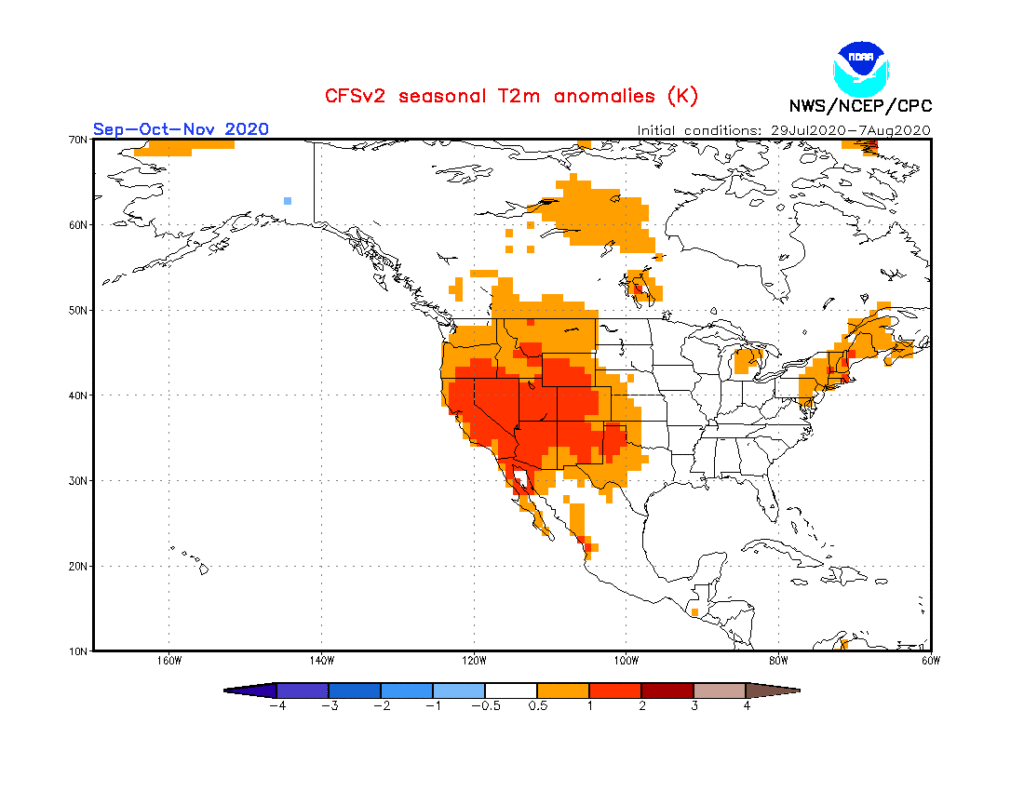
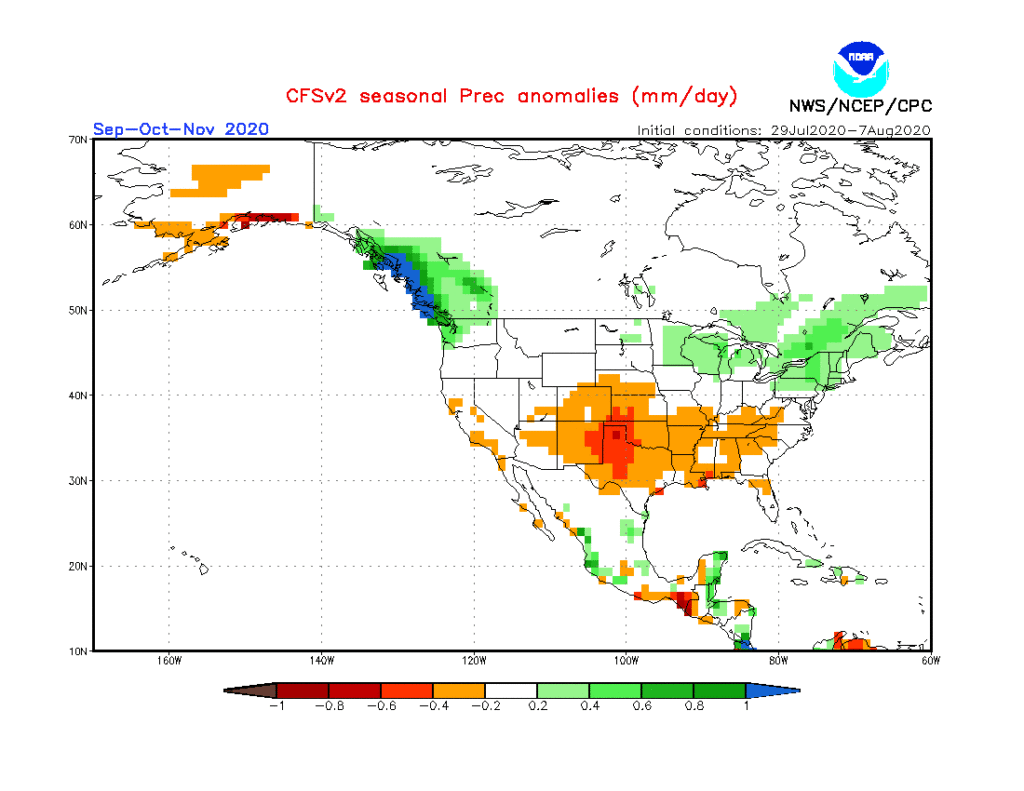


The coolest of the seasonal data is the CFSv2. It’s easy to interpret a cooler Central and East if the ridge and associated heat is so strong across the West. We will keep close tabs on trends over the next few weeks. Nina falls are notorious for at least a few weeks early on of unseasonably cool weather as well. Stay tuned.
As for winter, from this distance we’re bullish on a wetter, warmer than normal season, locally. Below normal snowfall is expected as of now. A dominant southeast ridge is expected to carry the day, at times flexing north into the TN and Ohio Valley.


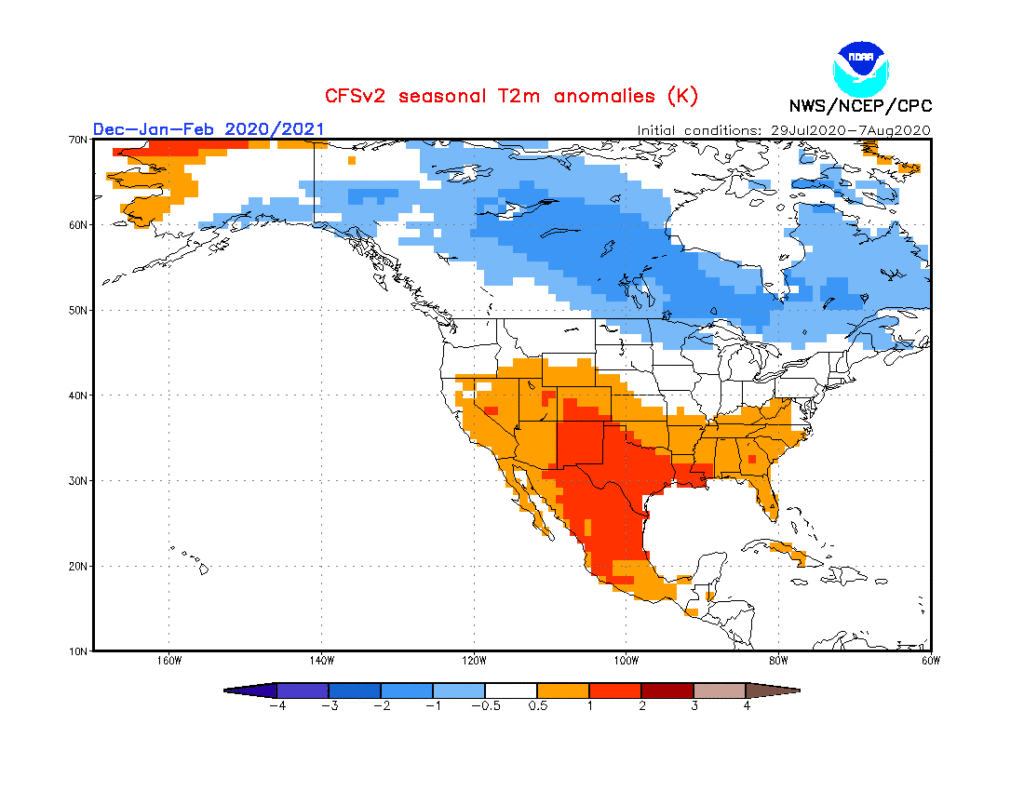
Interesting, like fall, the CFSv2 is the “coolest” of the big 3 seasonal models. Again, we’ll continue to keep close eyes on trends. Given performance of recent winters past, you may say I’ll just go with the opposite of what these seasonal models say. You’d have good reason for doing so. Unfortunately, that southeast ridge almost seems like a lock though. It’s also becoming more difficult to ignore the trends over the past decade or two.
Much more later on both fall and winter! Enjoy your Sunday!
Permanent link to this article: https://indywx.com/2020/08/09/thoughts-begin-to-shift-to-fall-and-winter/
Jul 16
Thursday Evening Long Range Update: Late Summer And Early Autumn Pattern On The Horizon…
As we traverse the “dog days” of summer and look ahead to early autumn, what does the overall pattern hold? As is typical this time of year, the tropics are on the verge of becoming much more active, as well. Given analogs and other drivers, we suggest those with plans to the Gulf or Carolina beaches pay particularly close attention to the developments in the coming weeks and couple of months ahead.
The short-term is, obviously, highlighted by unseasonably warm-hot conditions but there’s reason to buy into the ‘mean’ ridge position retrograding west prior to month’s end. The large majority of long range data shows this taking place, as well.
Note the way the new European Weeklies, CFSv2 Weeklies, and JMA Weeklies handle this evolution in similar fashion over the coming 2-3 weeks.


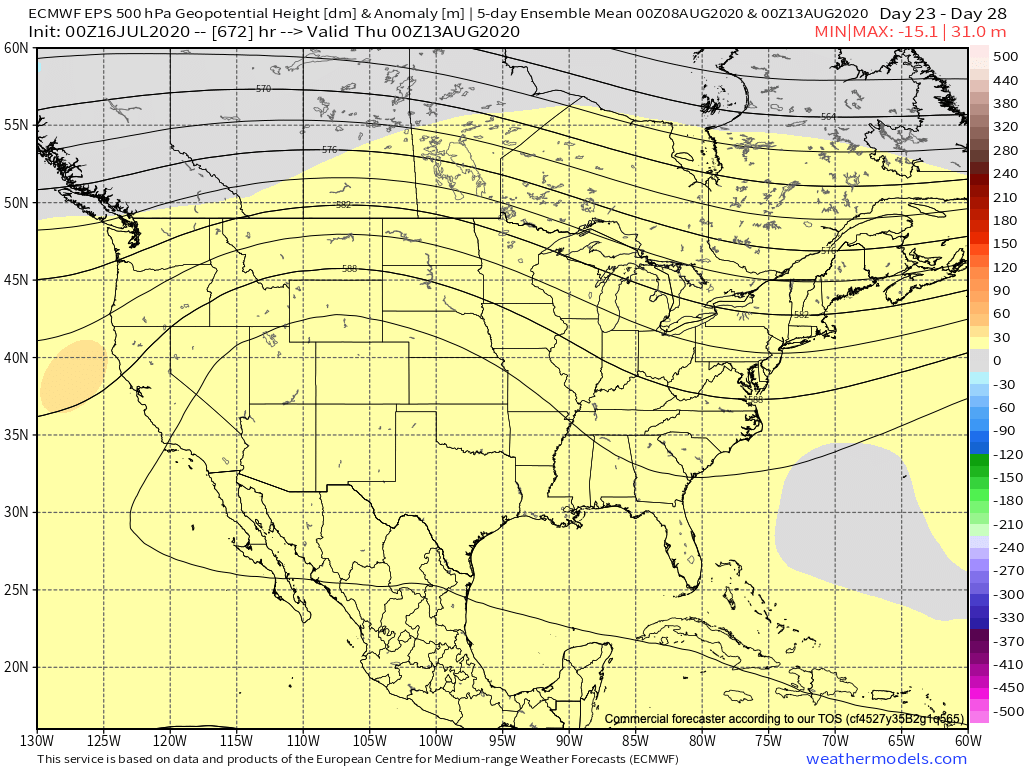

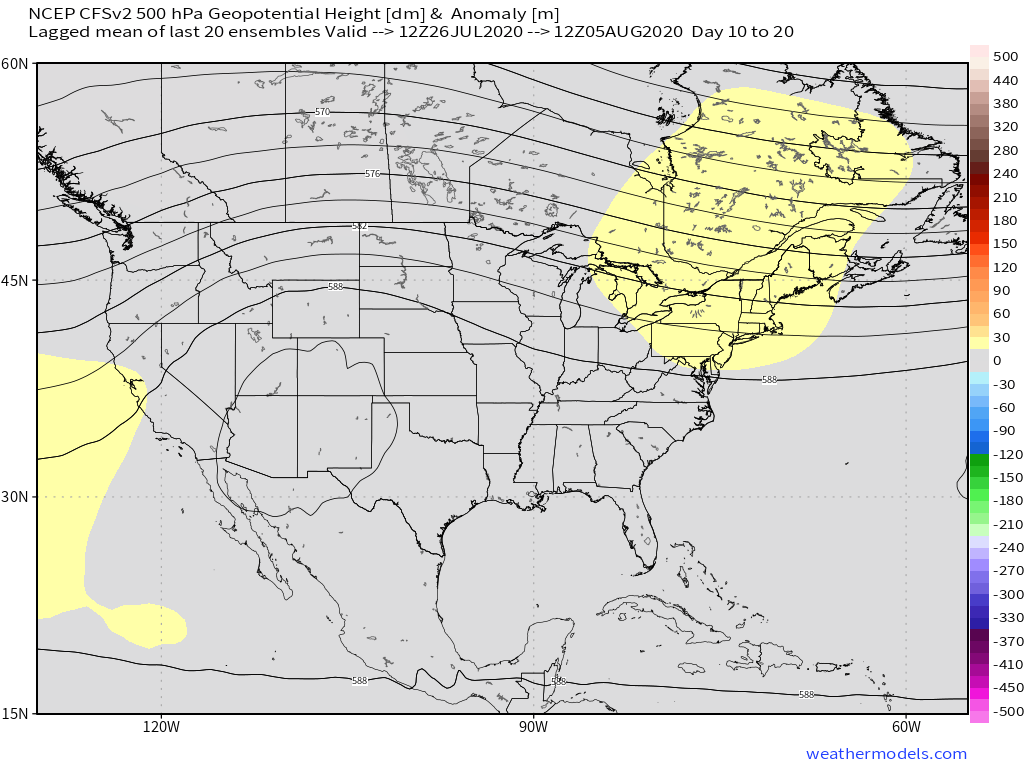
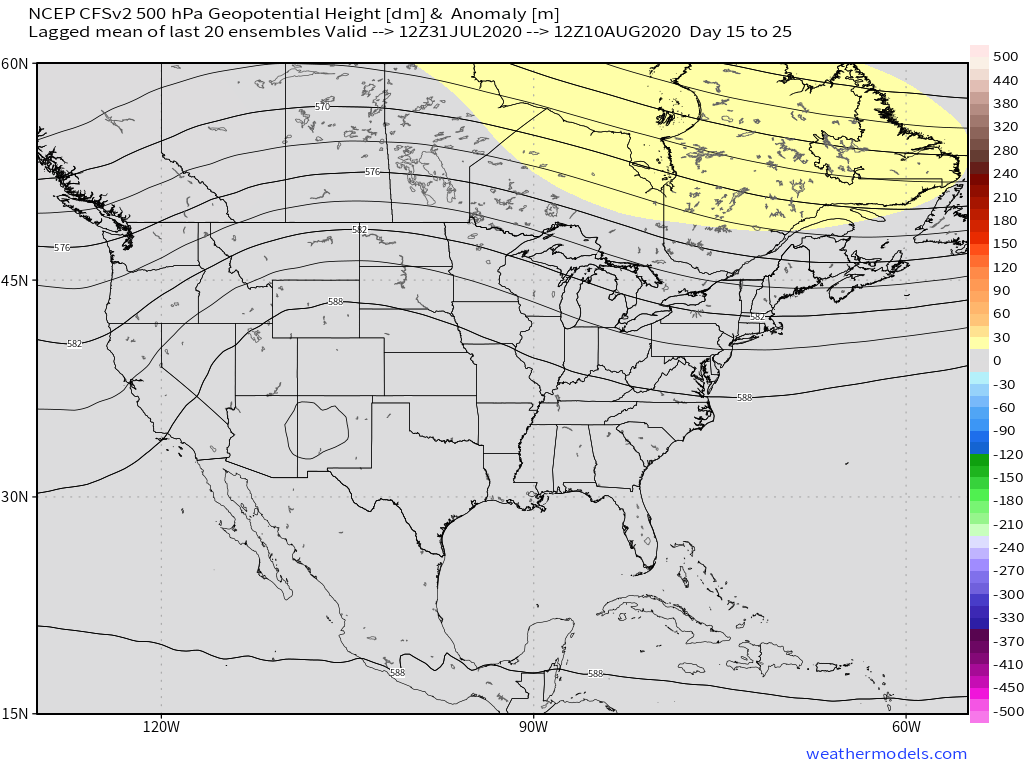
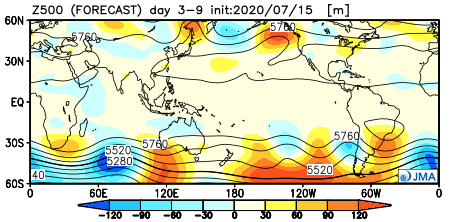
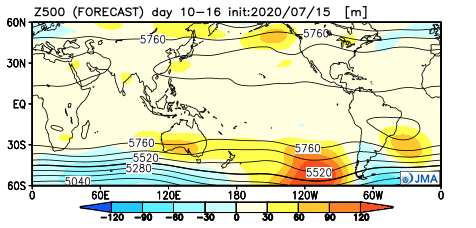
The screaming message is that the period of heat this weekend into early next week will transition west by the 2nd half of next week and into the Week 2 time period. Furthermore, though not saying there can’t be periods of “transient” heat still yet the remainder of the summer, the bulk of the sustained heat should be behind us once to the middle of next week.
Additionally, data is bullish on a wet close to July. This makes sense with the northwest flow aloft.

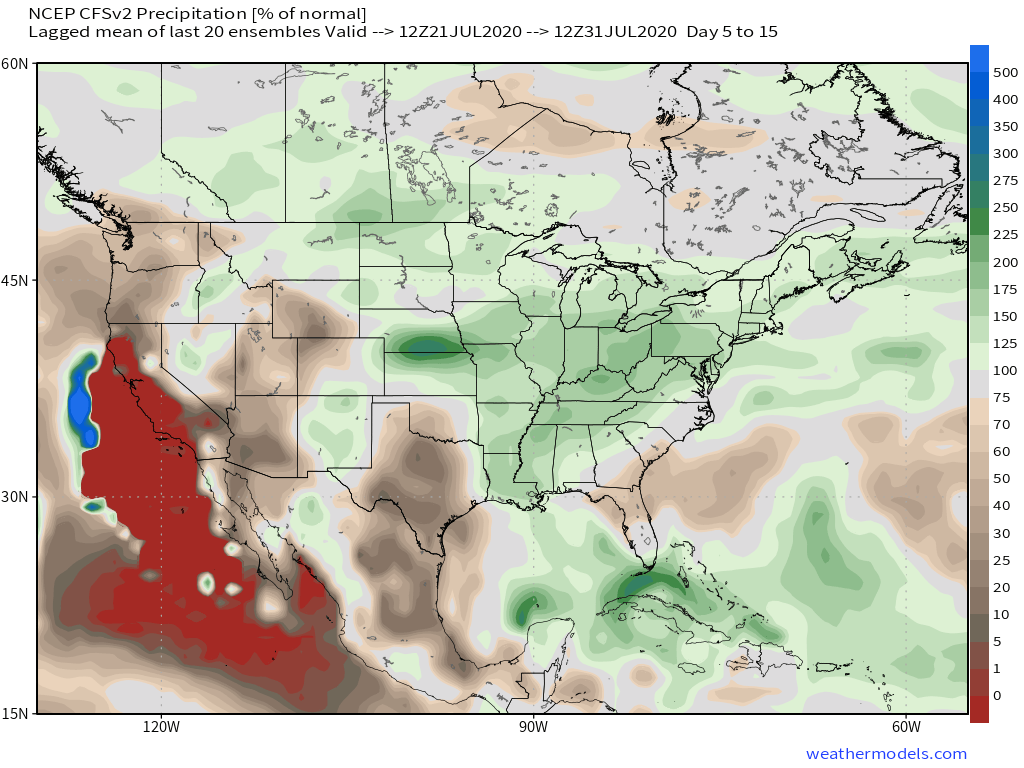

As the crucial late-summer stretch hits and harvest season is on the horizon, there’s reason to believe a favorable precipitation pattern should persist- if not potentially a bit wetter than normal. The wildcard, of course, as is typically the case has to do with the tropics. It only takes 1 or 2 tropical systems with the “right” inland track to provide heavy rains into the inland regions and there’s many reasons to buy into the fact this will be quite a busy “heart” of the tropical season this year. We’ll have to handle those as they come, as the steering currents can vary in significant fashion and there’s no way to accurately pinpoint inland areas most at risk of late-summer/ early fall heavy rain events from these tropical threats. Certainly, if your plans take you down to the beautiful Gulf Coast or Carolina beaches, it’ll be important to pay close attention to the developments and goings on as the season matures…
Stay tuned as we continue to move forward. In addition to our August Outlook, we’ll have more on where we believe the pattern is heading this fall and winter in the coming weeks…
Permanent link to this article: https://indywx.com/2020/07/16/thursday-evening-long-range-update-late-summer-and-early-autumn-pattern-on-the-horizon/
